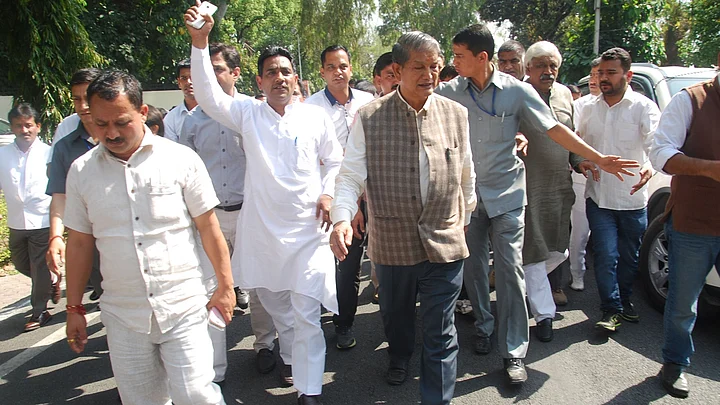The state of Uttarakhand has been placed under President’s Rule, within two months of the dismissal of the Arunachal Pradesh government on January 26.
Dismissing Harish Rawat’s regime in Dehradun under Article 356 of the Constitution appears to be yet another addition to the catalogue of constitutional sins committed by Prime Minister Narendra Modi’s government at the Centre.
By doing so, Modi has followed the footsteps of the Congress reign while in power. Yet, he had promised a different kind of polity.
Also read: Uttarakhand High Court Directs Floor Test in Assembly on 31 March
Partisan Politics
The provisions of the Article 356 – giving sweeping powers to the central government – are essentially aimed at restoring constitutional propriety after breakdown of governance in a state, Justice VR Krishna Iyer had once observed.
But settling partisan scores seems to have become the order of the day under the present disposition.
Abuse of Article 356, though, is nothing new in Indian politics. A few BJP leaders have tried to build up an argument that the Congress had no business to talk about constitutional decorum as the grand old party had several times dismissed non-Congress governments across the country.
Congress is forgetting how many state governments it has dismissed in the last 60 yearsKailash Vijayvargiya, Bharatiya Janata Party leader
President’s Rule as Imperial Power
In 1992-93, the PV Narasimha Rao government at the Centre dismissed four BJP governments – in Uttar Pradesh, Madhya Pradesh, Rajasthan and Himachal Pradesh following the demolition of Babri Masjid on 6 December.
After the Rao regime dismissed the Nagaland government led by Vamuzo in 1992, the chief minister said that the imposition of President’s Rule did not surprise him. “After all, the Congress has always considered itself as imperial power and treated the states as colonies,” the late Vamuzo was quoted as having said.
In 2005, during Manmohan Singh’s regime, Goa Chief Minister Manohor Parrikar – now the Defence Minister – was dismissed by Governor SC Jamir.
Incidentally in 1990, Jamir, then Nagaland Chief Minister, was himself dismissed by Governor MM Thomas after 12 ruling Congress legislators defected from the Congress camp.
Like Rawat, Jamir had demanded trial of strength in the assembly and had managed the backing of the Speaker, late TN Ngullie.
However, Governor Thomas, during the VP Singh regime at the Centre, did not summon the assembly and had even declined to meet two Congress observers, Rajesh Pilot and SS Ahluwalia, saying the views of Congress MPs were not required on a political situation in Nagaland.
Even a government led by hardcore socialist Chandrashekhar at the Centre was no different. In 1990, it dismissed the DMK ministry of M Karunanidhi in Tamil Nadu, despite lack of any adverse report from the state governor, to seek support from Rajiv Gandhi’s Congress which was wooing Karunanidhi’s rival, J Jayalalitha of the AIADMK.
Ironically, the Congress party is now at the receiving end of the imperial character of governance, protesting the “murder of democracy”.
A Forgotten Mandate
That brings to fore the debate around whether Article 356 should have some legal constraints.
By its actions, the Modi government and the Bharatiya Janata Party have put other Congress governments – in Manipur, Himachal Pradesh, Meghalaya and Karnataka – on notice that it will practice the same art that the regime before it did.
Modi may do well to recall that the 2014 the mandate was also about ushering in change in the way of politics.
Voters may have hoped that a proponent of development would care about constitutional propriety, since the BJP is fond of talking about “Cooperative Federalism” with the states.
But their actions in Uttarakhand, and Arunachal Pradesh, seem to have belied that hope.
(Nirendra Dev can be contacted at nirendra.n@ians.in. This article was published in special arrangement with IANS.)
(At The Quint, we question everything. Play an active role in shaping our journalism by becoming a member today.)
